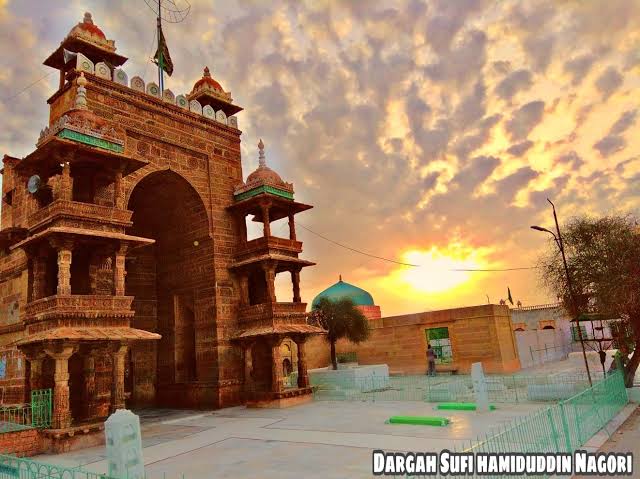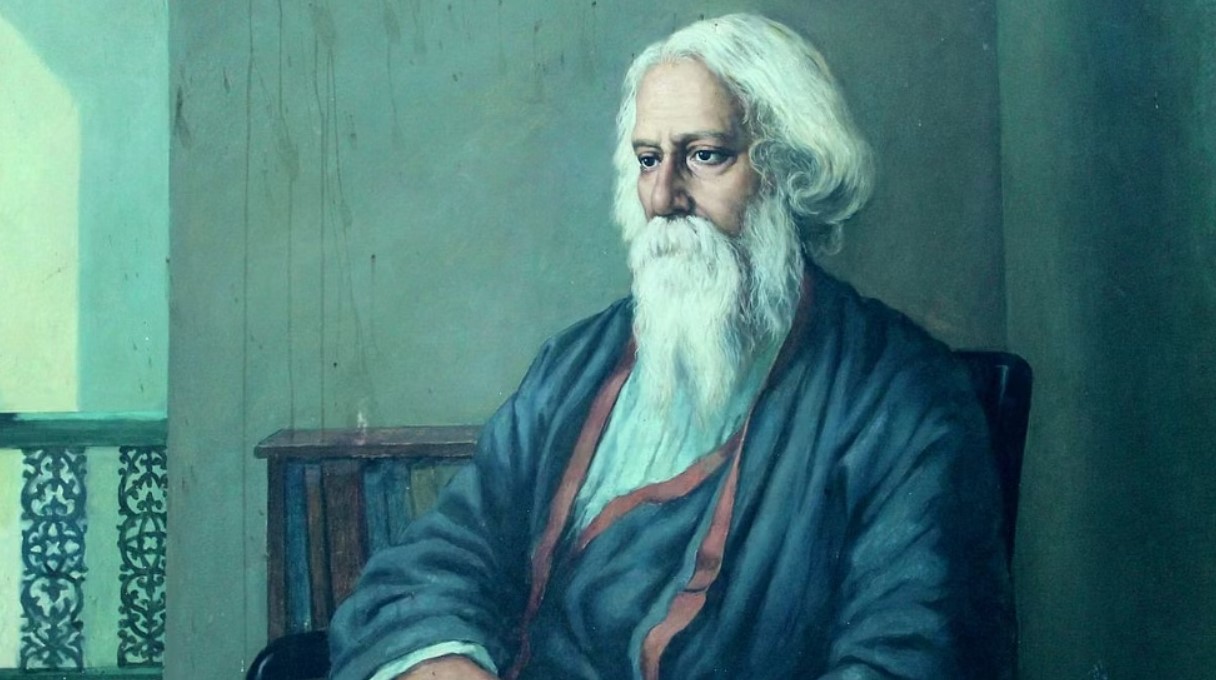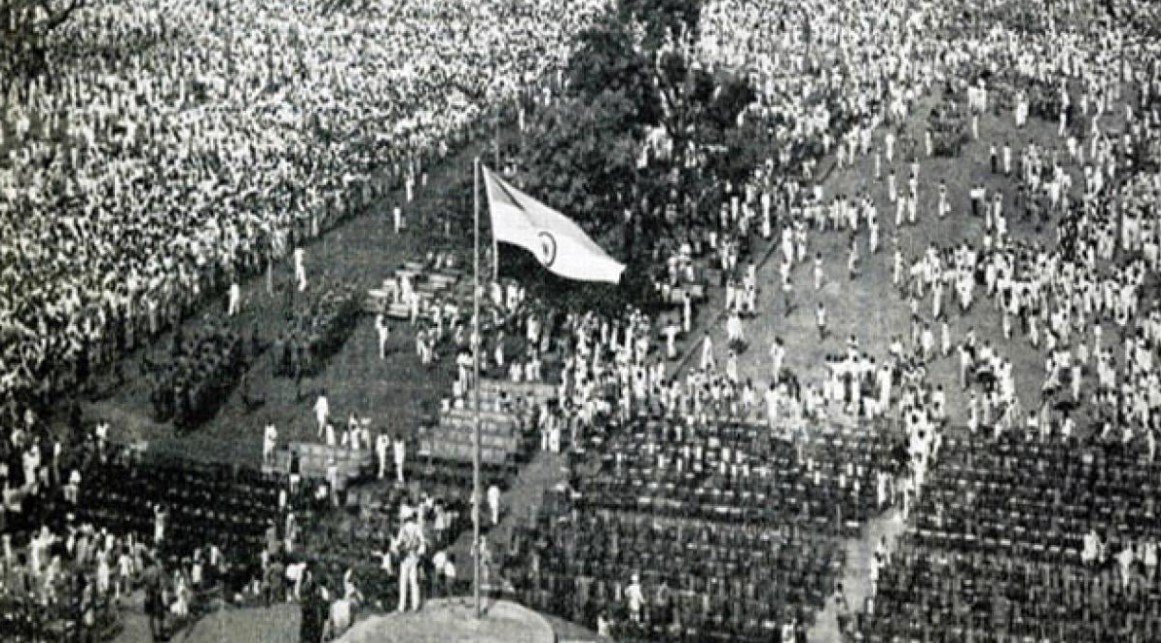(Dr. Shujaat Ali Quadri)
The fragrance of roses dissolves the sweetness of communal harmony in the shrine (dargah) of Hazrat Khwaja Hamiduddin Nagauri. Taking a basket full of pink and red colored roses, devotees’ hands spread in prayer with a plea for peace and tranquility in the country. Religious walls seem to break when the Sufis present the roses that bloomed in the dust of Pushkar and Taposthali to the Aastana-e-Aulia of Sufi Hamiduddin. There is no religious color of the rose, only the fragrance is of national unity, brotherhood and goodwill. The fragrance of rose is propagating brotherhood and Sufi in the country and abroad. Whether it is Urs in Nagaur or other occasions, rose flowers have a different identity.
Much like the ‘secular’ roses, Khwaja Hamiduddin Nagauri also remained a strict vegetarian in his life and even left a will describing the nature of food to be served to people in the dargah. Since then, only vegetarian food is served to the devotees in the premises all year round. It also highlights an important aspect of sufi saints and their composite culture of faiths.
It is said that some non-muslim devotees came to Khwaja Hamiduddin Nagauri and asked how they can come to his place when there is non-vegetarian food cooked? Khwaja sahab then gave orders for only vegetarian food to be served that can be eaten by all and nobody’s religious faith be hurt. The act describes Khwaja Sahab’s epitome of secularism and respect for all religions.
Hazrat Sufi Hamiduddin Nagauri Rahmat Ullah Alaih’s Urs attracts thousands of pilgrims in Rajasthan’s Nagaur every year with prayers. The dargah is also famous for worship as well as for the large dome built in the dargah and the magnificent carvings done in it. Before entering inside the dargah, the magnificent Buland Darwaza is visible. This Buland Darwaza was built by Sultan Muhammad bin Tughlaq. After going inside from the Darwaza, no dome is found on the main dargah i.e. the tomb of Sufi Sahib. However, on visiting most of the dargahs, there is a dome over the main shrine. It is said that many devotees tried to get it built in the past, but no one succeeded. Sultan Mohammad bin Tughlaq was among such followers.
Naib Sajjadanshin Jamal Ahmed of Dargah tells that Sultan Tughlaq had reached here with Lav-Lashkar after hearing the miracles of Sufi Sahib’s Dargah. Here he did not see the dome on the main tomb i.e. the shrine of Khwaja Hamiduddin, so he tried to get it built, but he also did not get success. The Sultan was adamant that he would get it built, but during this time he fell asleep and received a letter in Persian script. On which it was written that I like the open sky and birds. That’s why don’t try to make a dome. After this, the sultan returned disappointed after getting the Buland Darwaza of the main gate and the boundary wall of the dargah complex constructed. The artistry and style of the carvings done at many places inside the dargah, especially on the Buland Darwaza, reflect the characteristics of the construction art of that period. Quran’s verse is also engraved on the door. Naib Sajjadanshin Jamal Ahmed is in the 22nd generation of Sufi Sahab’s descendants.
Khwaja Hamiduddin was born in Delhi in 588 Hijri i.e. 1139 AD. At that time Shahabuddin Ghori was the ruler of Delhi. From the point of view of family, his chain meets Hazrat Mohammad Sahib Umar Farooq after 18 generations. In this context, you are also called ‘Farooqui’. Sufi Hamiduddin Nagauri is also known by the names Amanulard, Safi, Mohammad, Sawali, Emperor of Sacrifice etc. Sheikh Ahmad Tariq Lahori, the father of Sufi Sahib, came to Lahore from Bukhara. Then he came to Delhi and stayed there. Brought to Rajasthan at the age of forty, Sufi Sahib had two sons and two daughters. Sufi Sahib died on the 28th of the fourth month of the Islamic year during Asr and Maghrib prayers. He said that vegetarian food in which moth bajra khichda, sweet rice, potato rice, soyabean rice, kheer puri is prepared in the dargah. A tree is planted near the tomb. The leaves of this tree are taken with them as Zairin Prasad.
Sufi Sahib’s service is done in the Dargah from three to four in the morning. After this the worship of common people starts. Here the period of worship continues throughout the day. Pilgrims from different parts of the country visit dargah every year during Urs.





